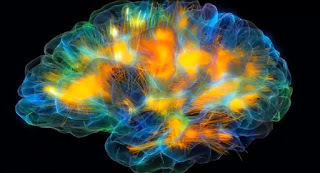How to Think Critically
 Critical Thinking is the mental process of actively and skillfully conceptualizing, applying, analyzing, synthesizing, and evaluating information to reach an answer or conclusion. There is only a very small fraction of true Critical Thinkers.and it’s complex. So what are the characteristics of Critical Thinking, or how to think critically?
Critical Thinking is the mental process of actively and skillfully conceptualizing, applying, analyzing, synthesizing, and evaluating information to reach an answer or conclusion. There is only a very small fraction of true Critical Thinkers.and it’s complex. So what are the characteristics of Critical Thinking, or how to think critically?
Thinking Slowly: There’s time for thinking fast, and there’s time for thinking slowly. And Critical Thinking fits into the second category, you need to think slowly to digest information without bias and leverage multitude of thought processes to think thoroughly. Critical Thinking needs to combine different thinking processes, to gather a mass of information, break it apart and reconstructed with a level of accuracy projecting futuristic events, numbers, etc. Breaking a routine forces Critical Thinking on a constant basis in order to act. Often, there are two extreme states of thinking: 1) thinking too much (even critical thinking) and 2) thinking too little. It would be good to think critically more often than we do concern our actions, If we don't, half of our life routine part becomes "unexamined" and unnoticed by us. If thoughtful reactions and pro-actions are key to sustainable relationships and innovations, maybe we would benefit from discovering what in our Critical Thinking moves us beyond thinking and into transformative action.
Critical Thinking and Creative Thinking goes hand-in-hand: Critical Thinking evolves deep thinking process usually with Creative Thinking embedded. So experience is inside the box, Critical Thinkers live out of the box. and it’s complex thought processes involving thinking differently, or thinking out of the box, it is about breaking the rules that have been created through experience. Critical thinking is essential for making decisions based on open up with diverse viewpoint, careful and comprehensive analysis and synthesis, and getting input from a broad range of personalities and cognitive difference of people on the particular matter. it could also include imaginative or resourceful thinking. The combination is truly powerful to conceptualize, communicate, develop and execute solutions, not just based on evidence, but on trends and discovery of hidden connections.
 Digging into the Root Causes: Critical Thinking is a crucial thought process to see underneath the symptoms and dig into root causes. There are only a very small fractions of true critical thinkers who can always dig through the root causes of problems. Problem solvers who can leverage critical thinking are always chasing root cause. Critical thinking requires to starting with a mentally neutral position; no biases or emotional quandary.Critical Thinking needs to combine different thinking processes, to gather a mass of information, break it apart and reconstructed with a level of accuracy, projecting futuristic events, numbers, etc., Critical thinking, like Systems Thinking, allows for more holistic thinking. Because we "steer away from “conventional wisdom,” question individual, collective, social assumptions and reframe the inquiry. There are two sides to this, at least in terms of our basic epistemic goals. One is getting to the truth, the other is avoiding falsehood. So Critical Thinking is associated with the metacognitive disciplines that steer one away from believing falsehoods, more so than steering one toward the truth.
Digging into the Root Causes: Critical Thinking is a crucial thought process to see underneath the symptoms and dig into root causes. There are only a very small fractions of true critical thinkers who can always dig through the root causes of problems. Problem solvers who can leverage critical thinking are always chasing root cause. Critical thinking requires to starting with a mentally neutral position; no biases or emotional quandary.Critical Thinking needs to combine different thinking processes, to gather a mass of information, break it apart and reconstructed with a level of accuracy, projecting futuristic events, numbers, etc., Critical thinking, like Systems Thinking, allows for more holistic thinking. Because we "steer away from “conventional wisdom,” question individual, collective, social assumptions and reframe the inquiry. There are two sides to this, at least in terms of our basic epistemic goals. One is getting to the truth, the other is avoiding falsehood. So Critical Thinking is associated with the metacognitive disciplines that steer one away from believing falsehoods, more so than steering one toward the truth. Critical Thinking requires an ability to be able to not only ask the right questions but rather absorb information forecast potentials; risks/benefits; mitigation and compare and contrast options, facts, ideas against logic and creativity. Critical thinking is an important thinking capability for business leaders and professionals to surviving and thriving in “VUCA” digital dynamic today.Follow us at: @Pearl_Zhu
Published on January 30, 2016 23:29
No comments have been added yet.



